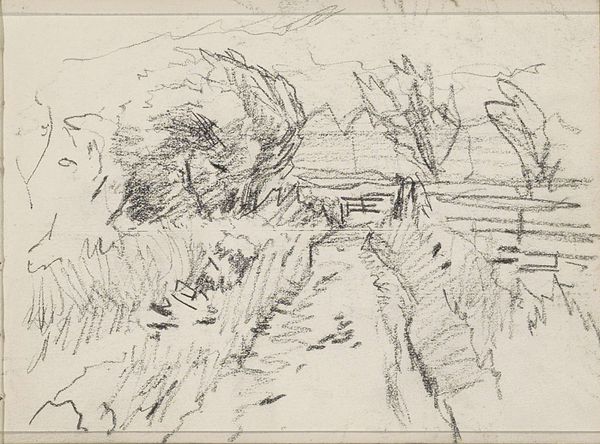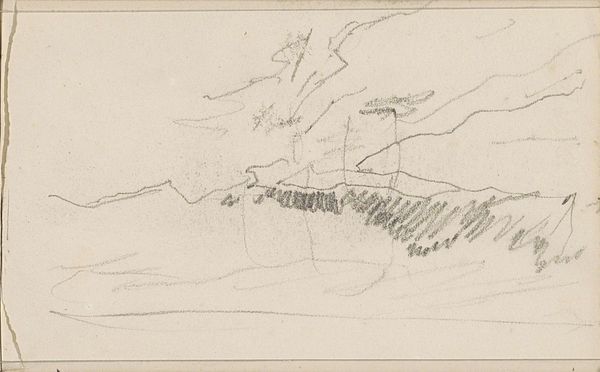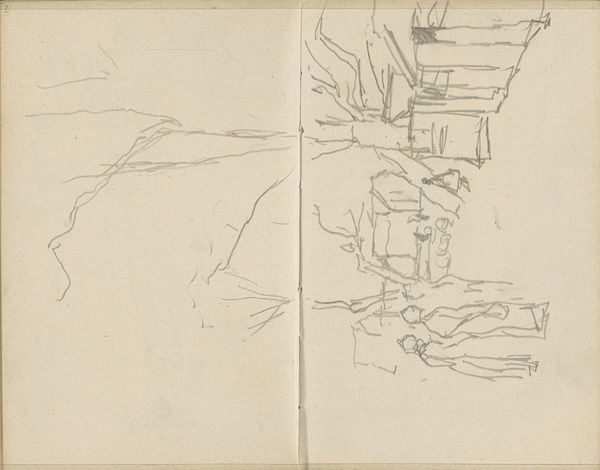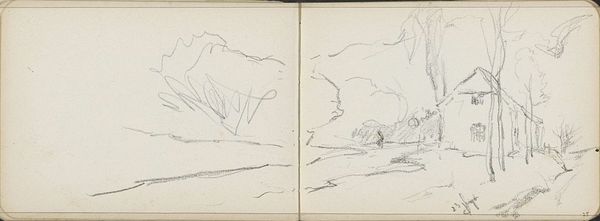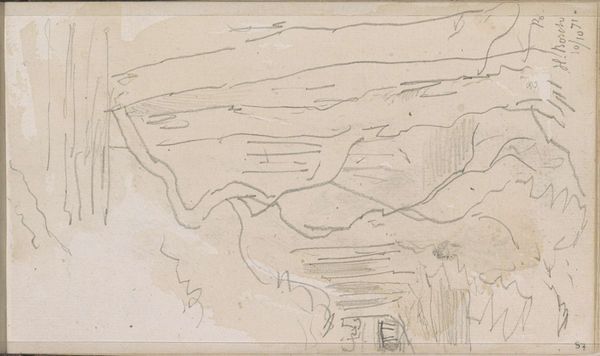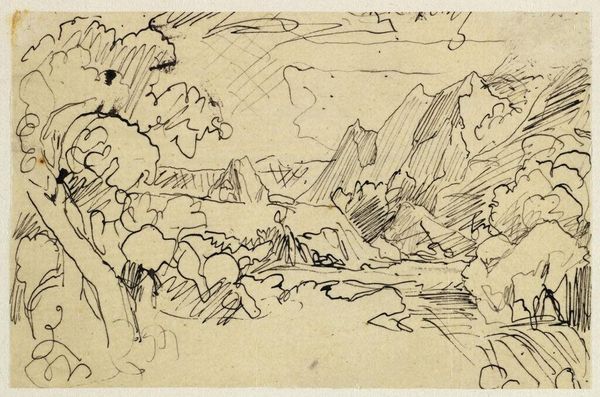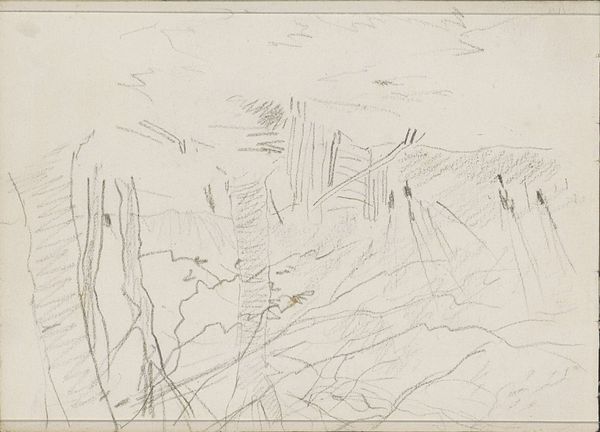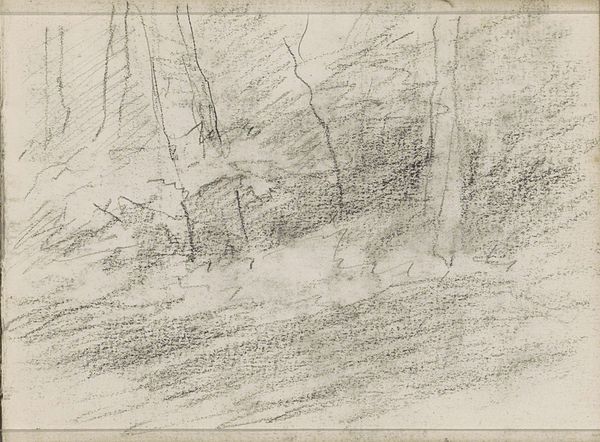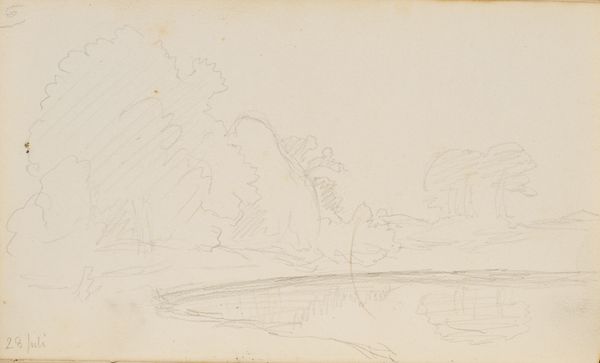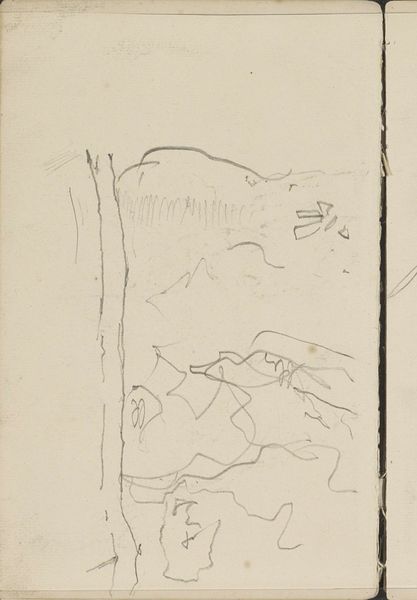
drawing, pencil
#
drawing
#
impressionism
#
landscape
#
pencil
#
realism
Copyright: Rijks Museum: Open Domain
Editor: Right now we’re standing in front of "Landschap", a landscape drawing by Anton Mauve from the late 19th century. It’s made with pencil, and it feels almost like a fleeting thought, captured on paper. It's really minimalist and dreamlike to me. What do you see in this piece? Curator: It's like catching Mauve in a moment of pure observation. A few simple lines to express... everything! Landscape is such an interesting genre; you really feel the presence of impressionism but also those roots in realism through an artist's deeply subjective response to a natural scene. Think of standing there, pencil in hand, trying to pin down what feels essentially unpinnable. How do you think that challenge translates to what we see here? Editor: I guess you see that tension in how sketchy it is. It doesn’t feel resolved, but maybe that's the point. It's about capturing the feeling more than the place itself. Curator: Precisely. It's not a photograph; it's a whisper of a place, a sensory impression rendered in graphite. The looseness of the strokes, almost scribbled, lets the imagination fill in the gaps. We become co-creators, seeing *our* landscape reflected in his. Isn't that beautiful? I imagine Mauve standing here, with the wind on his skin... And you? What are you feeling? Editor: Definitely! I hadn’t thought about it that way, but I like the idea that the incompleteness invites us in, makes the art so much more immersive and interesting than a perfect landscape photo. Curator: Exactly! Maybe incompleteness… invites empathy? It's an intimate act, sharing this incomplete vision. Editor: This was definitely my favorite artwork to describe from the exhibition. I will try to stand more often in front of landscapes and look at them differently from now on. Thank you. Curator: And I thank you for that vision too, remember art asks more questions than it answers, doesn’t it?
Comments
No comments
Be the first to comment and join the conversation on the ultimate creative platform.
